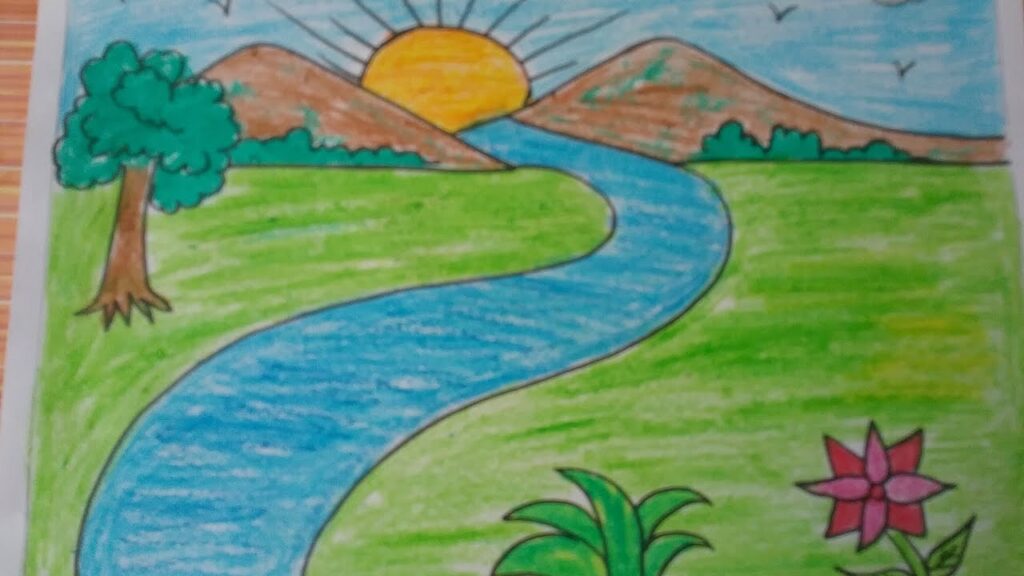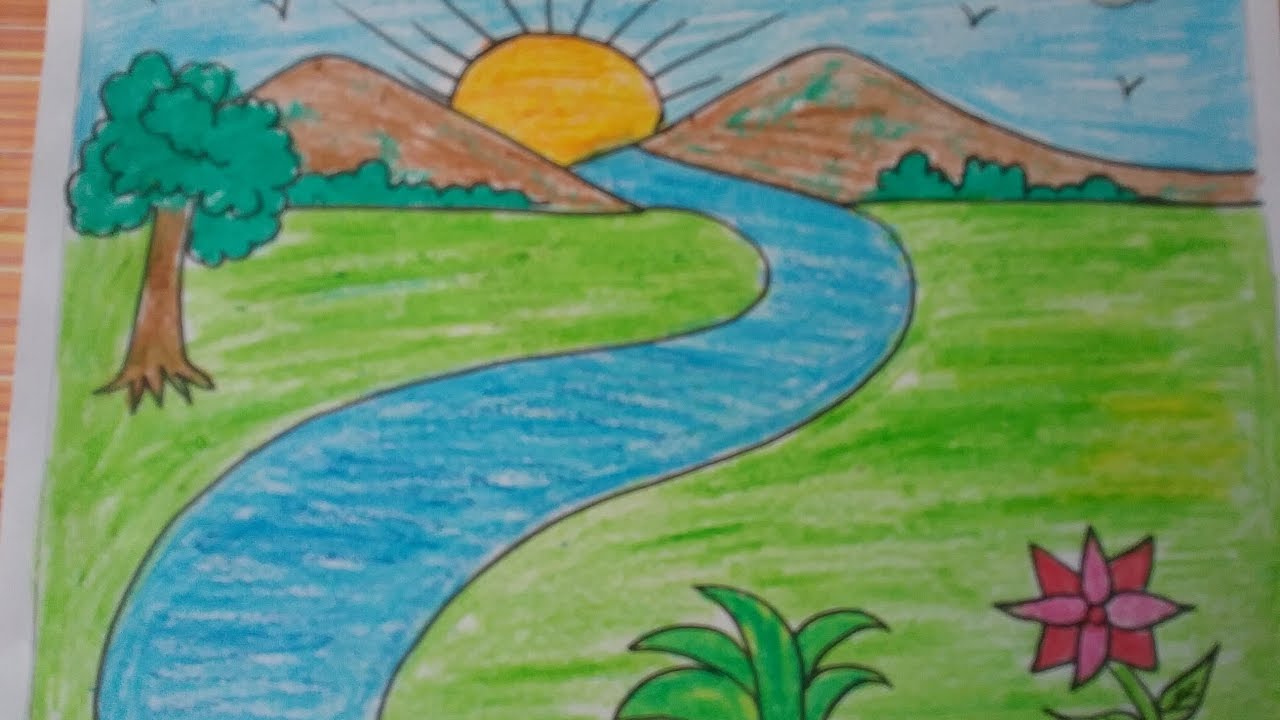
Breathtaking Landscapes Images: A Journey Through Nature’s Masterpieces
The allure of landscapes images lies in their ability to transport us to distant realms, evoke powerful emotions, and remind us of the raw beauty that exists beyond our everyday lives. From majestic mountain ranges to serene coastal vistas, landscapes images capture the essence of the natural world in all its glory. In this article, we’ll embark on a journey through some of the most captivating landscapes images, exploring the artistry behind their creation and the profound impact they have on our perception of the world.
The Art of Landscape Photography
Landscape photography is more than just pointing a camera and clicking a button. It’s a delicate dance between light, composition, and the photographer’s vision. The most compelling landscapes images are those that tell a story, conveying a sense of place and atmosphere that resonates with the viewer. Mastering this art requires a deep understanding of photographic techniques, an appreciation for the natural world, and a willingness to patiently wait for the perfect moment.
Composition Techniques
Composition plays a crucial role in creating visually appealing landscapes images. Several techniques can be employed to guide the viewer’s eye and create a sense of balance and harmony.
- Rule of Thirds: Dividing the frame into nine equal parts and placing key elements along these lines or at their intersections.
- Leading Lines: Using natural lines, such as rivers, roads, or fences, to draw the viewer into the scene.
- Framing: Using elements in the foreground, such as trees or rocks, to frame the main subject and add depth to the image.
- Symmetry and Patterns: Identifying and capturing symmetrical elements or repeating patterns in the landscape.
The Importance of Light
Light is the lifeblood of photography, and its role in landscapes images cannot be overstated. The quality and direction of light can dramatically alter the mood and atmosphere of a scene. Golden hour, the period shortly after sunrise and before sunset, is often considered the ideal time for landscape photography due to its warm, soft light. However, dramatic weather conditions, such as storms or fog, can also create stunning and unique landscapes images. [See also: The Best Time of Day for Landscape Photography]
Exploring Diverse Landscapes
The world is a vast and diverse tapestry of landscapes, each with its own unique character and charm. Let’s explore some of the most captivating types of landscapes images.
Mountain Majesty
Mountain ranges have always held a special place in the human imagination. Their towering peaks, rugged terrain, and breathtaking vistas inspire awe and wonder. Landscapes images of mountains often convey a sense of grandeur, solitude, and the power of nature. From the snow-capped peaks of the Himalayas to the verdant slopes of the Alps, mountain landscapes images offer a glimpse into a world of unparalleled beauty. The use of wide-angle lenses is often crucial to capture the scale and scope of these majestic formations. The best landscapes images capture the texture of the rock and the interplay of light and shadow.
Coastal Serenity
The coastline is a dynamic and ever-changing environment, where the land meets the sea. Landscapes images of coastal scenes often evoke a sense of tranquility, freedom, and the boundless power of the ocean. From rocky cliffs and sandy beaches to turquoise waters and dramatic sunsets, coastal landscapes images offer a diverse range of visual experiences. Long exposure techniques can be used to create a sense of motion and blur the waves, adding a dreamy quality to the image. [See also: Coastal Photography Tips and Techniques]
Forest Whispers
Forests are enchanting places, filled with mystery, wonder, and the soothing sounds of nature. Landscapes images of forests often convey a sense of intimacy, tranquility, and the interconnectedness of all living things. From towering redwoods to lush rainforests, forest landscapes images offer a glimpse into a world of vibrant colors, intricate textures, and hidden depths. Capturing the dappled light filtering through the canopy is a key element in creating compelling forest landscapes images. Macro photography can also be used to highlight the intricate details of the forest floor.
Desert Dreams
Deserts are often perceived as barren and desolate places, but they possess a unique beauty and charm all their own. Landscapes images of deserts often convey a sense of solitude, resilience, and the stark beauty of the natural world. From towering sand dunes to rocky canyons, desert landscapes images offer a glimpse into a world of extreme conditions and remarkable adaptations. The interplay of light and shadow is particularly important in desert photography, as it can highlight the textures and contours of the landscape. [See also: Photographing the Desert Landscape]
The Emotional Impact of Landscapes Images
Landscapes images have the power to evoke a wide range of emotions, from awe and wonder to peace and tranquility. They can transport us to distant lands, remind us of the beauty that surrounds us, and inspire us to protect the natural world. The most compelling landscapes images are those that resonate with us on a personal level, connecting us to something larger than ourselves. Whether it’s the grandeur of a mountain range, the serenity of a coastal vista, or the intimacy of a forest scene, landscapes images have the ability to touch our hearts and minds in profound ways. The best landscapes images evoke a sense of place and time, allowing the viewer to feel as though they are actually there.
Preserving Nature Through Photography
Beyond their aesthetic appeal, landscapes images can also play a vital role in raising awareness about environmental issues and inspiring conservation efforts. By capturing the beauty and fragility of the natural world, photographers can help to educate and engage the public, encouraging them to take action to protect our planet. Landscapes images can serve as powerful reminders of what we stand to lose if we fail to address climate change, pollution, and other environmental threats. The power of landscapes images lies in their ability to connect us emotionally to the natural world, fostering a sense of responsibility and stewardship.
Conclusion
Landscapes images are more than just pretty pictures; they are windows into the soul of the earth. They capture the essence of the natural world in all its beauty, diversity, and fragility. By exploring the art of landscape photography, appreciating the diverse landscapes around us, and recognizing the emotional impact of these images, we can deepen our connection to the natural world and inspire others to protect it for future generations. The enduring appeal of landscapes images lies in their ability to remind us of the beauty and wonder that exists beyond our everyday lives. As we continue to explore and document the world’s landscapes, we must also strive to be responsible stewards of the environment, ensuring that these breathtaking scenes remain for generations to come.

